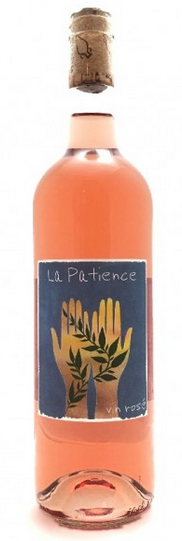Perfection


While it's splendidly refreshing under the summer sun, rosé's allure extends throughout the year. Join the "rosé all day" crew and embrace its year-round appeal.
There are a lot of misconceptions around rosé. In the USA, people don’t think of quality wine when they think of rosé — but in Europe, it’s pure class. In the South of France, this is poured out of the spigots it’s so popular.
The other assumption is that it’s sweet — which couldn’t be further from the truth. Contrary to popular belief, the color of rosé doesn't determine its sweetness. In fact, darker rosés can be drier than their lighter counterparts.
Raised in the Hamptons.
Hampton Water Rosé (led by Jon Bon Jovi and his son) is a remarkable quality rosé, evidenced by its impressive achievement of four consecutive 90-point ratings from Wine Spectator.





You Live Longer
This well-rounded rosé is marked by a refreshing character and surprising minerality that lead to a tantalizing finish. Produced in the beautiful island of Sardinia, a blue zone famous for residents living over 100 because of what they eat and drink. Su Entu Nina Rosé wine is one of those drinks and a delightful representation of the region's winemaking expertise. A proper rosé for any occasion.
Shop Su Entu NinaGuide to Rosé Wines
While Rosé (pink wine) has been loved for centuries, its appeal has resurged with catchy phrases like "Rosé All Day" and "Yes Way Rosé." Guys, you're not left out with "Brosé," aka "Pink wine enjoyed with friends, or your bros."


Red wine grapes are crushed and left to soak (with the sinks) for 2-20 hours; much shorter than red wines. This results in a pink wine with a lighter flavor profile than red wine. Then it's blended one of four ways.
The most common method and involves crushing the grapes and allowing them to rest, or macerate, in their skins for a short period of time. Macerated rosé leans toward deeper hues and fuller-bodied rosé.


The saignée method is less common and involves “bleeding off” (removing) a portion of red wine juice during fermentation and using it to make rosé wine.
This process drains the pressed juice off the skins pretty much immediately, resulting in a very light pink hue and brighter flavors.

The shade won't define the sweetness or dryness of the wine specifically, but it will give you insight as to what you can expect from the flavor. The lighter the color, the closer towards a white wine the flavor will be, think citrus, floral, and mineral notes, and clean finish, whereas the darker the colored rosé’s will be fuller bodied and have more red berry and earthy notes.

If i had my say, I would have Rose be as popular as white wine. America is late to the party. This is poured out of the spigots in the south of France. This is class, but we're busy thinking of Franzia...?
There was a literal rosé shortage in the Hamptons some years back that lead to a boost in the rosé market.
Rosé wines are fun. It's a symbol of what's to come.

Colored Glasses
A Versatile & Joyful Varietal for Any Occasion













